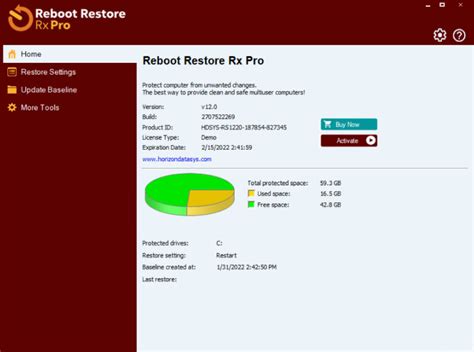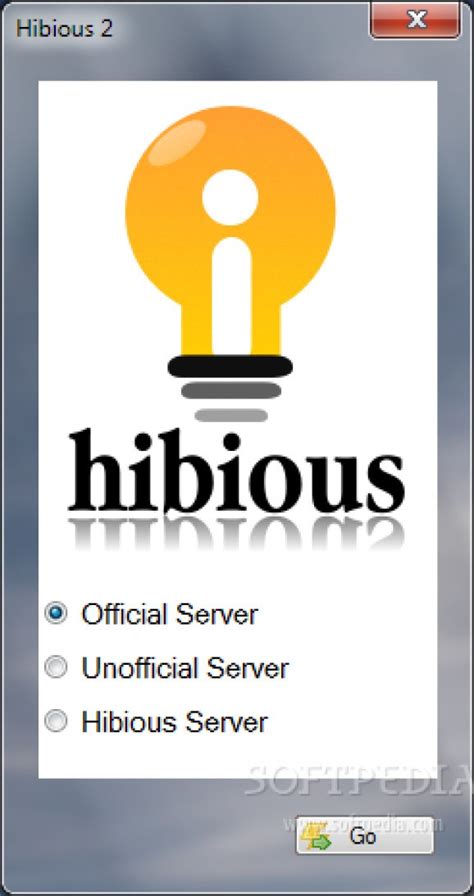Download acz container
Author: o | 2025-04-24

Used ACZ Container for Windows? Share your experience and help other users. Download ACZ Container latest version for Windows free. ACZ Container latest update:

ACZ Container Vista download - ACZ Container documents and
Locking into the file system so that we could have multiple distinct processes able to manipulate the container storage at the same time, without having to go through a single daemon process.We created a project called container/storage, which can do all of the COW features required for running, building, and storing containers, without requiring one process to control and monitor it (i.e., no daemon required). Now skopeo and other tools and projects can take advantage of the storage. Other open source projects have begun to use containers/storage, and at some point we would like to merge this project back into the upstream docker project.Undock and let's innovateIf you think about what happens when Kubernetes runs a container on a node with the Docker daemon, first Kubernetes executes a command like:kubelet run nginx –image=nginxThis command tells the kubelet to run the NGINX application on the node. The kubelet calls into the CRI and asks it to start the NGINX application. At this point, the container runtime that implemented the CRI must do the following steps:Check local storage for a container named nginx. If not local, the container runtime will search for a standardized container image at a container registry.If the image is not in local storage, download it from the container registry to the local system.Explode the the download container image on top of container storage—usually a COW storage—and mount it up.Execute the container using a standardized container runtime.Let's look at the features described above:OCI Image Format Specification defines the standard Used ACZ Container for Windows? Share your experience and help other users. Download ACZ Container latest version for Windows free. ACZ Container latest update: Download ACZ Container latest version for Windows free. ACZ Container latest update: Decem Free download Container Loading Calculator 2025 Latest full version - Container Load Calculator simulates placing goods.Free Download Container Loading Calculator full version standalone offline installer for Windows. The container Load Calculator simulates placing goods inside a container and determines their optimal positioning.Overview of Container Loading CalculatorThe container Load Calculator simulates placing goods inside a container and determines their optimal positioning. It's pretty simple: specify the type of cargo and input its parameters (width, height, length, weight, and number of units). You can pack cargo on pallets or directly into your chosen container. The application will display the most optimal way to position the goods. You can then customize the results as you see fit.Features of Container Loading CalculatorSpecify the type of cargo and input its parameters Can pack cargo on pallets or directly into a container of your choosingThe application will display the most optimal way to position the goodsOften used in tandem with Cargo Consolidation Service to figure out how much space your goods will takeTechnical Details and System RequirementsSupported OS: Windows 11, Windows 10, Windows 8.1, Windows 7RAM (Memory): 2 GB RAM (4 GB recommended)Free Hard Disk Space: 200 MB or moreFAQsQ: Can Container Loading Calculator handle irregularly shaped items?A: Yes, Container Loading Calculator can accommodate irregularly shaped items. You can input the dimensions and weight of each item accurately, and the software will optimize the load accordingly.Q: Can I export the loading plan to other software or formats?A: Yes, it allows you to export the loading planComments
Locking into the file system so that we could have multiple distinct processes able to manipulate the container storage at the same time, without having to go through a single daemon process.We created a project called container/storage, which can do all of the COW features required for running, building, and storing containers, without requiring one process to control and monitor it (i.e., no daemon required). Now skopeo and other tools and projects can take advantage of the storage. Other open source projects have begun to use containers/storage, and at some point we would like to merge this project back into the upstream docker project.Undock and let's innovateIf you think about what happens when Kubernetes runs a container on a node with the Docker daemon, first Kubernetes executes a command like:kubelet run nginx –image=nginxThis command tells the kubelet to run the NGINX application on the node. The kubelet calls into the CRI and asks it to start the NGINX application. At this point, the container runtime that implemented the CRI must do the following steps:Check local storage for a container named nginx. If not local, the container runtime will search for a standardized container image at a container registry.If the image is not in local storage, download it from the container registry to the local system.Explode the the download container image on top of container storage—usually a COW storage—and mount it up.Execute the container using a standardized container runtime.Let's look at the features described above:OCI Image Format Specification defines the standard
2025-04-13Free download Container Loading Calculator 2025 Latest full version - Container Load Calculator simulates placing goods.Free Download Container Loading Calculator full version standalone offline installer for Windows. The container Load Calculator simulates placing goods inside a container and determines their optimal positioning.Overview of Container Loading CalculatorThe container Load Calculator simulates placing goods inside a container and determines their optimal positioning. It's pretty simple: specify the type of cargo and input its parameters (width, height, length, weight, and number of units). You can pack cargo on pallets or directly into your chosen container. The application will display the most optimal way to position the goods. You can then customize the results as you see fit.Features of Container Loading CalculatorSpecify the type of cargo and input its parameters Can pack cargo on pallets or directly into a container of your choosingThe application will display the most optimal way to position the goodsOften used in tandem with Cargo Consolidation Service to figure out how much space your goods will takeTechnical Details and System RequirementsSupported OS: Windows 11, Windows 10, Windows 8.1, Windows 7RAM (Memory): 2 GB RAM (4 GB recommended)Free Hard Disk Space: 200 MB or moreFAQsQ: Can Container Loading Calculator handle irregularly shaped items?A: Yes, Container Loading Calculator can accommodate irregularly shaped items. You can input the dimensions and weight of each item accurately, and the software will optimize the load accordingly.Q: Can I export the loading plan to other software or formats?A: Yes, it allows you to export the loading plan
2025-04-01And run Speech containers with Docker.To run disconnected containers (not connected to the internet), you must submit this request form and wait for approval. For more information about applying and purchasing a commitment plan to use containers in disconnected environments, see Use containers in disconnected environments in the Azure AI services documentation.If you are approved to run the container disconnected from the internet, the following example shows the formatting of the docker run command to use, with placeholder values. Replace these placeholder values with your own values.In order to prepare and configure a disconnected custom speech to text container, you need two separate speech resources:A regular Azure AI Speech resource that is either configured to use a "S0 - Standard" pricing tier or a "Speech to Text (Custom)" commitment tier pricing plan. This is used to train, download, and configure your custom speech models for use in your container.An Azure AI Speech resource that is configured to use the "DC0 Commitment (Disconnected)" pricing plan. This is used to download your disconnected container license file required to run the container in disconnected mode.Follow these steps to download and run the container in disconnected environments.Download a model for the disconnected container. For this step, use a regular Azure AI Speech resource that is either configured to use a "S0 - Standard" pricing tier or a "Speech to Text (Custom)" commitment tier pricing plan.Download the disconnected container license. For this step, use an Azure AI Speech resource that is configured to use the "DC0 Commitment (Disconnected)" pricing plan.Run the disconnected container for service. For this step, use an Azure AI Speech resource that is configured to use the "DC0 Commitment (Disconnected)" pricing plan.Download a model for the disconnected containerFor this step, use a regular Azure AI Speech resource that is either configured to
2025-04-21Resource group.$StorageAccountName = "azsblobcontainer" # Give a name to your new storage account. It must be lowercase.$Location = "Local" # Choose "Local" as an example.$ContainerName = "photo" # Give a name to your new container.$ImageToUpload = "C:\temp\Hello.jpg" # Prepare an image file and a source directory in your local computer.$DestinationFolder = "C:\temp\download" # A destination directory in your local computer.# Import the Connect PowerShell module"Set-ExecutionPolicy RemoteSigned -Scope CurrentUser -ForceImport-Module .\Connect\AzureStack.Connect.psm1# Configure the PowerShell environment# Register an Az environment that targets your Azure Stack Hub instanceAdd-AzEnvironment -Name $ARMEvnName -ARMEndpoint $ARMEndPoint # Login$TenantID = Get-AzsDirectoryTenantId -AADTenantName $AADTenantName -EnvironmentName $ARMEvnNameConnect-AzAccount -EnvironmentName $ARMEvnName -TenantId $TenantID # Set a default Azure subscription.Select-AzSubscription -SubscriptionName $SubscriptionName# Create a new Resource Group New-AzResourceGroup -Name $ResourceGroupName -Location $Location# Create a new storage account.New-AzStorageAccount -ResourceGroupName $ResourceGroupName -Name $StorageAccountName -Location $Location -Type Standard_LRS# Set a default storage account.Set-AzCurrentStorageAccount -StorageAccountName $StorageAccountName -ResourceGroupName $ResourceGroupName # Create a new container.New-AzStorageContainer -Name $ContainerName -Permission Off# Upload a blob into a container.Set-AzStorageBlobContent -Container $ContainerName -File $ImageToUpload# List all blobs in a container.Get-AzStorageBlob -Container $ContainerName# Download blobs from the container:# Get a reference to a list of all blobs in a container.$blobs = Get-AzStorageBlob -Container $ContainerName# Create the destination directory.New-Item -Path $DestinationFolder -ItemType Directory -Force # Download blobs into the local destination directory.$blobs | Get-AzureStorageBlobContent -Destination $DestinationFolder# endThis sample assumes you have successfully Installed PowerShell for Azure Stack Hub. This script will help you complete the configuration and ask your Azure Stack Hub tenant credentials to add your account to the local PowerShell environment. The script will then set the default Azure subscription, create a new storage account in Azure, create a new container in this new storage account, and upload an existing image file (blob) to that container. After the script lists all blobs in that container, it will create a new destination directory on your
2025-04-14